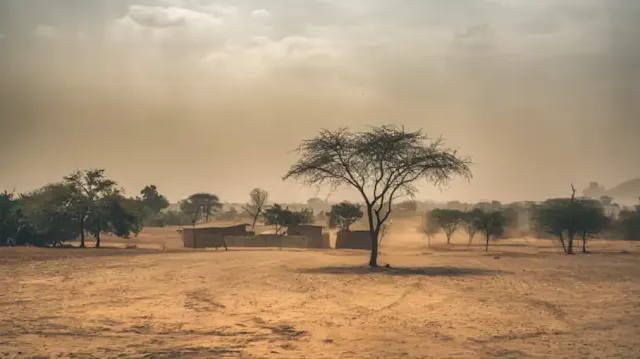Desertification is not just an environmental issue; it’s a pressing challenge that threatens the livelihoods of many communities in Northern Nigeria. Understanding its effects and exploring sustainable solutions can lead to significant improvements in these areas.
Key Takeaways
- Desertification in Northern Nigeria leads to reduced soil fertility, increased dust storms, and declining water sources, creating a cycle of poverty and food insecurity.
- Local communities face higher energy costs and health issues due to smoke inhalation as traditional energy sources like wood and charcoal become scarce.
- Promoting biogas technology requires addressing regulatory environments and improving infrastructure to support sustainable energy practices.
- Community awareness initiatives, including workshops and materials in local languages, are essential for increasing acceptance of biogas solutions.
- Partnerships with NGOs and government organizations can provide necessary resources, technical assistance, and funding for biogas projects.
- Investments through microloans, international grants, and public-private partnerships are crucial for kickstarting biogas initiatives.
- Fostering local engagement and ownership among community members is vital for the success and sustainability of biogas technology.
- Embracing biogas can combat desertification and improve energy access, paving the way for a greener future for Northern Nigeria.
Understanding the Impact of Desertification in Northern Nigeria
The Climate Crisis: A Growing Concern for Northern Nigeria
Examining the Evidence of Desert Encroachment
Desertification is a serious issue affecting Northern Nigeria, leading to loss of vegetation and resources. The evidence of desert encroachment is seen through a decrease in arable land and changes in local weather patterns. This phenomenon not only threatens the environment but also impacts the livelihoods of many communities.
According to various studies, the affected areas exhibit signs such as:
- Reduced soil fertility
- Increased dust storms
- Declining water sources
These factors contribute to a cycle of poverty and food insecurity that communities struggle to break.
Effects on Local Communities and Their Energy Needs
As desertification spreads, local communities face numerous challenges, especially regarding their energy needs. Traditional sources of energy, such as wood and charcoal, are becoming scarce, forcing families to search for alternative solutions. The shift in energy sources can lead to more reliance on fossil fuels, which are not only harmful to the environment but also costly.
Some of the direct effects on communities include:
- Increased energy costs
- Health issues from smoke inhalation
- Decreased agricultural productivity
These challenges highlight the urgent need for innovative and sustainable energy solutions to support these vulnerable communities.
Integrating Biogas Technology into Community Practices
Challenges and Barriers to Biogas Adoption
Addressing Regulatory and Infrastructure Limitations
Integrating biogas technology into community practices in Northern Nigeria is not without its challenges. One major hurdle is the regulatory environment, which can sometimes be complex and unclear. Additionally, the existing infrastructure often requires significant improvements to support biogas systems.
Community Awareness and Education Initiatives
Without proper education, many community members may not fully understand the benefits of biogas. Here are some ways to enhance community awareness:
- Organizing workshops and training sessions
- Developing informational materials in local languages
- Collaborating with local leaders for community outreach
Envisioning a Sustainable Future: The Path Forward
Collaborative Efforts for Biogas Implementation
Partnerships with NGOs and Government Organizations
Building partnerships is essential for the success of biogas projects. Collaborating with NGOs and government bodies can provide necessary resources and support. Here are key areas where partnerships can make a difference:
- Technical assistance and expertise
- Access to funding and grants
- Support for community engagement initiatives
Investment Opportunities and Funding for Biogas Projects
Funding is critical for the development of biogas projects. Various sources of investment can help kickstart these initiatives, including:
- Microloans for local farmers
- International grants for renewable energy
- Public-private partnerships
Final Thoughts on Biogas as a Sustainable Solution for Desertification
Encouraging Local Engagement and Long-Term Commitment
For biogas technology to thrive, it is crucial to encourage local engagement. This can be achieved through:
- Fostering a sense of ownership among community members
- Establishing ongoing training programs
- Creating feedback mechanisms for continuous improvement
Call to Action: Embracing Biogas Technology for a Greener Future
It's time for communities to consider biogas as a viable and sustainable energy solution. By adopting biogas technology, we can combat desertification and improve energy access. I encourage everyone to take part in this journey towards a greener future!


















0 Comments